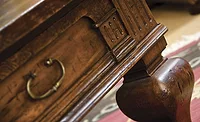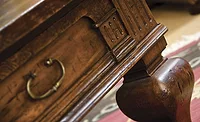Book Review - Building an Industrial Wood Finish
Author: Robert M. Cox, Jr.
Publisher: Forest Products Society, Madison, WI, 2003, 52 pages
Reviewed by Dr. Darlene Brezinski
This book is intended for wood coatings manufacturers, although I would also recommend it for wood finishers. The author spent over 30 years working for a wood finisher, so his perspectives and experiences are of benefit to the finishing and manufacturing community.
Understanding the numerous variables involved in formulating a wood finish can help formulators. The book focuses on the four interdependent aspects of a wood-finishing operation: the finishing products themselves, the execution of the wood finish, the environmental considerations and quality control. To minimize problems, the coatings manufacturer must address issues such as design, quality and cost.
Chapter One reviews product characteristics, multi-step wood furniture finishes, kitchen cabinet and office furniture finishes, specialty finishes (urethanes and polyesters), and waterborne systems. Quality, appearance and durability terms are defined. A table is also included that summarizes and compares the properties of various wood-finishing systems and rates them as well. This table is very interesting and provides good information very succinctly.
It is refreshing to have clear definitions of many terms for wood products, as I have often seen them used in various ways and sometimes incorrectly. Individual steps involved in wood finishing are reviewed from the perspective of the formulator/manufacturer.
Chapter 2 covers application procedures, examples of wood-finishing manufacturing lines, discusses transfer efficiency and includes an example of how to calculate the actual finishing costs. Environmental concerns are addressed in Chapter 3 with various Acts being reviewed and options for reduction of VOCs and HAPs.
The final chapter focuses on quality control, starting with the initial wood preparation and treatment. A nice summary of the finishing operation is included, which addresses the variables and provides recommendations. The section on troubleshooting was very valuable and included a nice description of the problems that occur on finished wood products as well as ways to avoid the problems.
This book recognizes the problem for manufacturers in trying to provide quality finishes that meet VOC and HAPs standards without having to spend significant capital dollars on finishing line improvements.
For more information, contact Forest Products Society, 2801 Marshall Ct., Madison, WI 53705-2295; phone 608/231.1361; or visit www.forestprod.org.
Looking for a reprint of this article?
From high-res PDFs to custom plaques, order your copy today!







